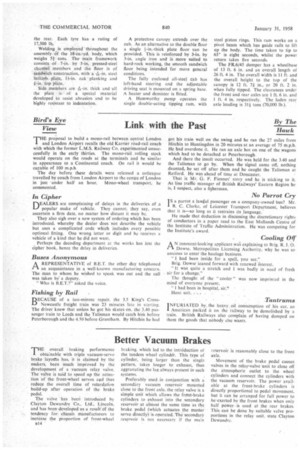Better Vacuum Brakes
Page 48

If you've noticed an error in this article please click here to report it so we can fix it.
THE overall braking performance obtainable with triple vacuum-servo brake layodts has, it is claimed by the makers, been much improved by the development of a vacuum relay valve. The valve is said to speed up the actuation of the front-wheel servos and thus reduce the overall time of retardation build-up after operation of the brake pedal.
The valve has been introduced by Clayton Clayton Dewandre Co., Ltd.. Lincoln. and has been developed as a result of the tendency for chassis manufacturers to increase the proportion of front-wheel
braking. which led to the introduction of the tandem wheel cylinder. This type of cylinder, being larger than the single pattern, takes longer to exhaust, thus aggravating the lag always present in such systems,
Preferably used in conjunction with a secondary vacuum reservoir mounted close to the front axle, the relay valve is a simple unit which allows the front-brake cylinders to exhaust into the secondary reservoir at almost the same time as the brake pedal (which actuates the master servo directly) is operated. The secondary reservoir is not necessary if the main reservoir is reasonably close to the front axle.
Movement of the brake pedal causes valves in the relay-valve unit to close off the atmospheric outlet to the wheel cylinders and connect the cylinders with the vacuum reservoir. The power available at the front-brake cylinders is directly proportional to pedal movement. but it can be arranged for full power to be exerted by the front brakes when only half power is used at the rear brakes. This can be done by suitable valve proportions in the relay unit. state Clayton Dewandre.




































































































